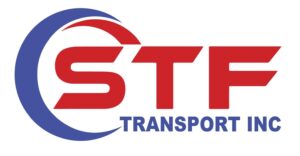Less-Than-Truckload (LTL) shipping offers businesses a cost-effective, flexible, and reliable solution for transporting smaller volumes of freight. By understanding the benefits of LTL shipping, key considerations, and best practices for optimizing shipments, businesses can leverage LTL transportation to streamline their logistics operations, reduce costs, and improve customer satisfaction. Whether you’re shipping palletized goods, small packages, or specialized freight, LTL shipping provides the efficiency and affordability you need to succeed in today’s competitive marketplace.
What is Less-Than-Truckload (LTL) Shipping?
Less-Than-Truckload (LTL) shipping refers to the transportation of relatively small freight shipments that do not require the use of an entire truck trailer. Instead of dedicating an entire trailer to a single shipment, LTL carriers consolidate multiple smaller shipments from different shippers onto a single truck, maximizing trailer space and optimizing transportation efficiency. LTL shipments are typically palletized and handled by carriers with specialized equipment and facilities to ensure safe and efficient delivery.
Benefits of LTL Shipping:
Cost-Effective: LTL shipping offers cost savings for businesses shipping smaller volumes of freight. By sharing trailer space with other shippers, businesses only pay for the space they use, reducing transportation costs compared to full truckload shipping.
Flexibility: LTL shipping provides flexibility for businesses with varying shipment sizes and delivery requirements. Whether you’re shipping a single pallet or multiple skids, LTL carriers can accommodate a wide range of shipment sizes and offer customizable service options to meet your specific needs.
Regional Coverage: LTL carriers operate extensive networks of distribution centers and terminals, providing comprehensive coverage across regions and ensuring efficient transportation from origin to destination. This regional coverage enables businesses to reach customers in remote or underserved areas with ease.
Reduced Transit Times: LTL carriers utilize hub-and-spoke distribution networks to consolidate and route shipments efficiently, resulting in faster transit times compared to traditional parcel carriers. Businesses can benefit from expedited delivery and improved supply chain responsiveness.
Enhanced Visibility: LTL carriers offer advanced tracking and tracing capabilities, allowing businesses to monitor the status and location of their shipments in real-time. Enhanced visibility enables proactive management of shipments, proactive communication with customers, and timely resolution of issues.
Key Considerations for LTL Shipping:
Packaging and Palletization: Proper packaging and palletization are essential for LTL shipping to ensure the safe and secure transportation of goods. Use sturdy packaging materials, secure pallets with shrink wrap or banding, and label shipments clearly with destination information and handling instructions.
Accurate Weight and Dimensions: Accurate weight and dimensions are critical for calculating shipping rates and ensuring proper handling of LTL shipments. Provide precise weight and dimension measurements when booking LTL shipments to avoid billing discrepancies and delays in transit.
Transit Time and Service Level: Consider transit time and service level requirements when selecting an LTL carrier for your shipments. Evaluate carriers based on their network coverage, transit times, service reliability, and track record for on-time delivery.
Documentation and Paperwork: Ensure that all required documentation and paperwork, such as bills of lading, shipping labels, and customs forms, are completed accurately and submitted to the LTL carrier in a timely manner. Proper documentation facilitates smooth transportation and expedites the delivery process.
Dedicated Capacity: Truckload shipping provides businesses with dedicated transportation capacity, ensuring that their freight receives priority treatment and is not delayed by other shipments or stops along the route. This can help businesses maintain supply chain reliability and consistency.
Strategies for Maximizing Efficiency in Truckload Shipping:
Optimize Trailer Utilization: Maximize trailer space utilization by carefully planning and optimizing the loading and stacking of freight within the trailer. Use pallets, containers, and load bars to maximize space efficiency and minimize wasted trailer space.
Consolidate Shipments: Whenever possible, consolidate multiple smaller shipments into a single truckload shipment to maximize efficiency and reduce transportation costs. By consolidating shipments, businesses can take advantage of economies of scale and optimize their transportation operations.
Utilize Technology: Leverage transportation management systems (TMS) and route optimization software to streamline and automate the truckload shipping process. These technologies can help businesses plan optimal routes, track shipments in real time, and identify opportunities for cost savings and efficiency improvements.
Implement Just-In-Time (JIT) Delivery: Implementing a just-in-time delivery strategy can help businesses minimize inventory carrying costs and reduce transportation lead times. By coordinating production schedules with transportation schedules, businesses can ensure that goods arrive precisely when needed, minimizing warehousing and storage costs. Establish Strategic Partnerships: Develop strategic partnerships with reliable carriers and logistics providers to ensure consistent and efficient truckload shipping services. By working closely with trusted partners, businesses can access dedicated capacity, competitive pricing, and reliable service levels, optimizing their transportation operations.
